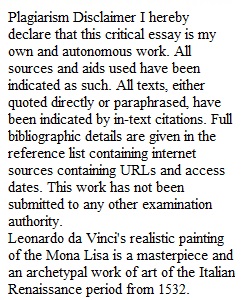


Q Unit 6 Thematic Essay Interdisciplinary Deconstruction of an Artifact Topic: This essay has two parts. Begin by describing MacGregor’s analytical strategy. What was his story (the topic of his research) and how did he narrate it? What disciplines did he borrow from to make a story worth telling? Next, try to do what MacGregor did. Select an object, an artifact, that can be interpreted as having various cumulative significances at different moments in history. Try to identify something that was meaningful at one point in time in a particular way and was then appropriated (borrowed) in another context in order to draw on its original significance in another context and for a different objective, and was then appropriated once more due to its accumulated symbolic meaning, and used as a symbol in yet another context. For example, Saint Patrick’s day parades have been occasions for pivotal moments in US history since the Colonial Era. Alternatively or additionally, your object could represent multiple, simultaneous impacts. For example, a bottle of Coca-Cola was the key product attracting a particular population in a developing nation to Western culture (along with Levi’s) and is also the cause of child exploitation in the sugar fields of El Salvador. Remember: A human artifact is a cultural creation; this would include a piece of music, a symbol, and a piece of technology. All artifacts have layers of meaning accumulated over time. They are constructs of the cultural imagination. Your task is to deconstruct an artifact - to break it down and see the underlying meanings. Try to do what MacGregor did by selecting an artifact that can be interpreted as having various cumulative significances at different moments in history. When we say "artifact," think beyond archeology. Identify something that was meaningful at one point in time in a particular way, and was then appropriated (borrowed) in another context in order to draw on its original significance for a different objective, and was then appropriated once more due to its accumulated symbolic meaning, and used as a symbol in yet another context. Use your sociological imagination to read and interpret its biography. Guidelines: Your essay should be at least 400-500 words in length. It should be formatted according to APA guidelines for cover pages and reference citations. Use in-text citations and include a reference page. Use the examples found in the APA Module. Use the PACS APA Guide. Direct quotation is not required. However, you must use in-text citation when referring to the information and ideas found in external research materials. Use at least three credible sources. Your sources need not meet the research-quality standard from specific peer-reviewed articles. For example, information from the History Channel website would not be considered research-quality material, but it meets the basic standard of reliability. Approach your analysis from an interdisciplinary perspective; most artifacts have economic, political, social, and psychological dimensions. Assessment: This assignment is worth 50 points. See the grading rubric to plan your assignment. Unit 6 Thematic Essay: Interdisciplinary deconstruction of an artifact Please submit your thematic essay as a word document. Include an APA format cover-page. Rubric LSTD 5013 Standardized Essay Rubric LSTD 5013 Standardized Essay Rubric Criteria Ratings Pts This criterion is linked to a Learning OutcomeAdherence to prompt 10 to >6.0 pts Full Marks Student followed the prompt and instructions provided for the essay including length requirement. 6 to >0.0 pts Partial Marks Student partially followed the prompt and instructions provided for the essay. 0 pts No Marks Student did not follow the prompt and instructions provided for the essay if an essay was submitted at all. 10 pts This criterion is linked to a Learning OutcomeFocus of essay 10 to >6.0 pts Full Marks The student employed a consistent thesis throughout the essay. 6 to >0.0 pts Partial Marks The student employed a thesis in most parts of the essay. 0 pts No Marks The student did not employ a consistent thesis throughout the essay if an essay was submitted at all. 10 pts This criterion is linked to a Learning OutcomeWriting style and quality 5 to >3.0 pts Full Marks The essay had no errors in grammar, mechanics, usage, spelling, or APA style. 3 to >0.0 pts Partial Marks The essay had some errors in grammar, mechanics, usage, spelling, or APA style. 0 pts No Marks The essay had many errors in grammar, mechanics, usage, spelling, or APA style if an essay was submitted at all. 5 pts This criterion is linked to a Learning OutcomeAnalysis & evidence 15 to >9.0 pts Full Marks The student conducted a strong critical analysis of the topic and incorporated evidence from the text that is relevant to the argument. 9 to >0.0 pts Partial Marks The student conducted a sufficient analysis of the topic and incorporated evidence from the text that is only somewhat relevant to the argument. 0 pts No Marks The student conducted a weak critical analysis of the topic and did not incorporate evidence from the text that was relevant to the argument if an essay was submitted at all. 15 pts This criterion is linked to a Learning OutcomeOrganization 10 to >6.0 pts Full Marks The essay is arranged logically and contains all required sections. 6 to >0.0 pts Partial Marks The essay is adequately organized and is missing at most one section. 0 pts No Marks The essay has poor organization and is missing two or more sections. 10 pts Total Points: 50
View Related Questions